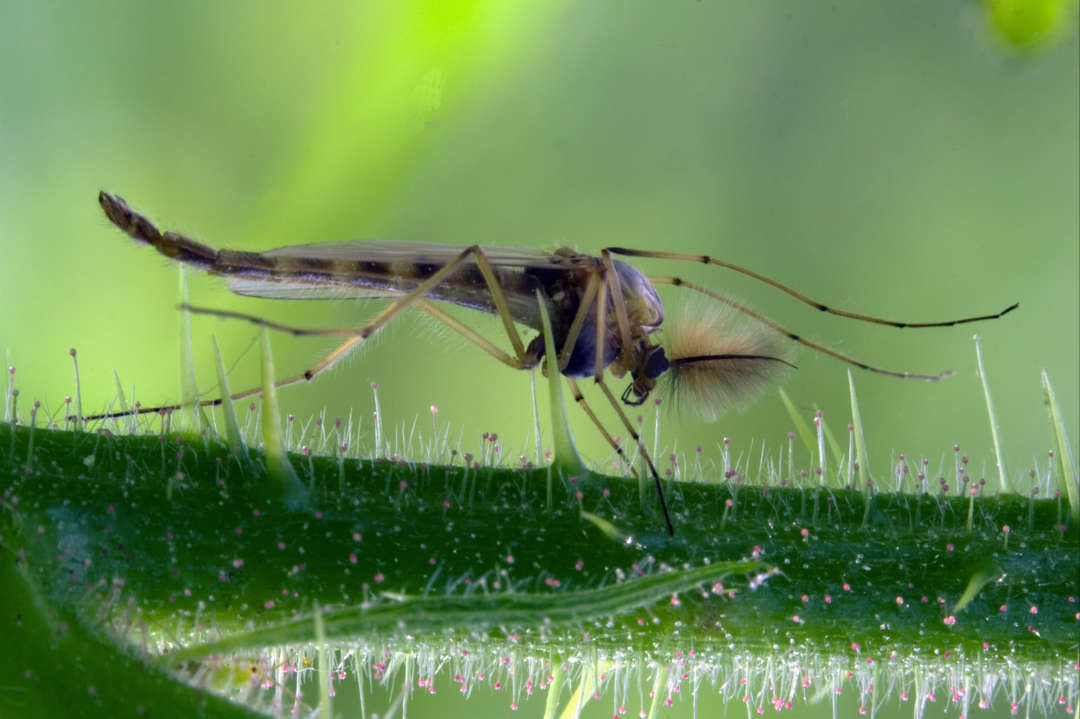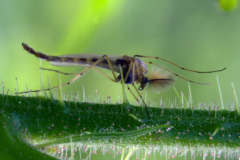Partial autonomy
How species separate, but not entirely
The process of one species splitting into two new ones has fascinated biologists for centuries. However, the process of speciation does not inevitably have to lead to the complete isolation of the new species, as commonly assumed until now. This is being confirmed by a new study of chironomids, recently published in the scientific journal “Evolution Letters,” which demonstrates the possibility of stable intermediate stages. This raises questions regarding the current concept of biological species.
The prevailing theory until now suggests that regular gene flow through successful pairings between populations is the main barrier to their segregation into species. In recent years, however, theoretical and empirical work has shown that speciation is possible under certain circumstances despite this continued exchange of genetic information. To date, few research results are available that show the actual extent of the phenomenon of speciation despite documented gene flow, and the time frame necessary for a new species to arise. In particular, it is not clear whether the process of speciation, once started, will inevitably lead to complete genomic and reproductive isolation sooner or later. This would mean that the diverging populations are developing into new species in the sense of the widely recognized biological species concept.
The results of a new study at the LOEWE Centre for Translational Biodiversity Genomics (TBG) and the Senckenberg Biodiversity and Climate Research Centre question these definitions. “We were able to show that species can achieve and maintain their dissimilarities despite the fact that they still share the majority of their genome with each other,” says Dennis Schreiber, Senckenberg Biodiversity and Climate Research Centre and the Johannes Gutenberg University in Mainz.
Schreiber analyzed the genome of individuals from two chironomid species, Chironomus riparius and Chironomus piger. Both species occur throughout the entire northern hemisphere and share similar ranges; however, they prefer ecologically different habitats. Their genome reveals that these species rapidly diverged several million generations (i.e., approx. 700,000 years) ago. Yet, the speciation
process apparently came to a complete stop before the entire genome of each species was fully isolated from the other. Since then, hybridization, i.e., cross-breeding between individuals of both species, occurs on a regular basis.
In the process, about 70 percent of their genome is exchanged; this involves roughly half of all genes. Nevertheless, the species remain ecologically recognizable, even though each can lay exclusive claim to only 30 percent of its genome (albeit including the other half of the genes), and these areas are relatively small and scattered across the entire genome. “On the one hand, this concerns genes that are related to the known ecological differences between the species, e.g., their susceptibility to nitrogen compounds such as nitrite from liquid manure,” explains Schreiber.
“At the same time, however, genes that closely cooperate with other genes on the molecular level, e.g., in the respiratory chain, protein production, or transfer through membranes, also show differences. Here, incompatibility between the species would apparently be too disruptive: therefore, the species maintain their individuality in these sectors,” says the head of the study, Prof. Markus Pfenninger of the LOEWE Centre for Translational Biodiversity Genomics and the Senckenberg Biodiversity and Climate Research Centre.
“These new findings change our concept of biological species. Apparently, this does not require an entirely independent genome; instead, there are stable intermediate stages where related, well-characterized species maintain their autonomy despite a large genomic overlap. This will be subject of our future research,” adds Pfenninger in conclusion.
Publication in Evolution Letters:
Dennis Schreiber, Markus Pfenninger: “Genomic divergence landscape in recurrently hybridising Chironomus sister taxa suggests 1 stable steady-state between mutual gene-flow and isolation”, https://doi.org/10.1002/evl3.204
Evolution Letters Editors’ blog:
To study and understand nature with its limitless diversity of living creatures and to preserve and manage it in a sustainable fashion as the basis of life for future generations – this has been the goal of the Senckenberg Gesellschaft für Naturforschung (Senckenberg Nature Research Society) for 200 years. This integrative “geobiodiversity research” and the dissemination of research and science are among Senckenberg’s main tasks. Three nature museums in Frankfurt, Görlitz and Dresden display the diversity of life and the earth’s development over millions of years. The Senckenberg Nature Research Society is a member of the Leibniz Association. The Senckenberg Nature Museum in Frankfurt am Main is supported by the City of Frankfurt am Main as well as numerous other partners. Additional information can be found at www.senckenberg.de.

